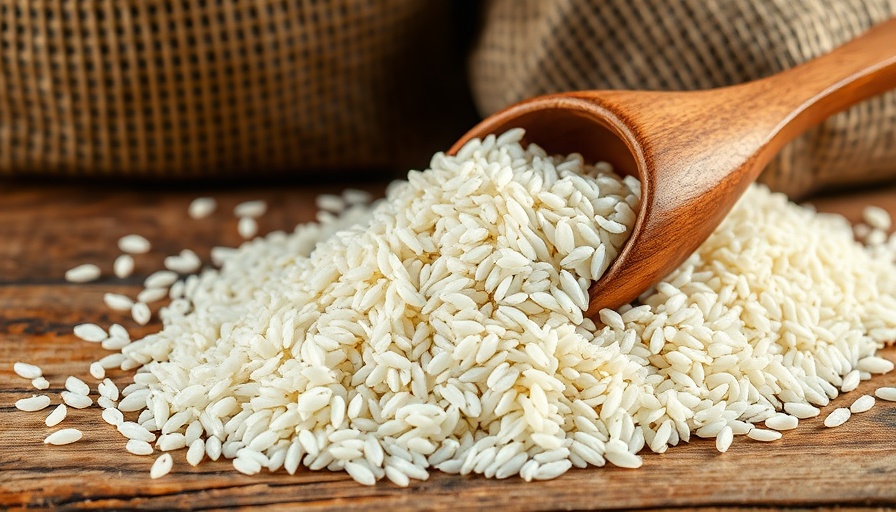
Introducing Rice: The Versatile Grain
Rice has been a staple food for thousands of years, and for good reason. It's inexpensive, easy to cook, and can be used in a multitude of dishes. Whether you're looking to whip up a quick side or create a hearty main course, rice can be the foundation of your meal. In this article, we'll explore seven easy rice recipes you can make every day of the week, so you can enjoy this versatile grain to its fullest!
Monday: Basic White Rice
Start your week with a simple yet essential recipe—basic white rice. This is the perfect base for stir-fries, curries, or as a side for grilled meats. To prepare:
- Ingredients: 1 cup white rice, 2 cups water, a pinch of salt.
- In a saucepan, combine all ingredients.
- Bring to a boil, then reduce heat to low, cover, and simmer for 17 minutes.
- Let it rest for 5 minutes before fluffing with a fork.
Using Jasmine rice? Its sweet flavor and fluffy texture will elevate your meal!
Tuesday: Spinach Rice
Transform Tuesday into a colorful feast with spinach rice. This dish brings the freshness of greens into your cooking.
- Ingredients: 1 cup cooked white rice, 2 cups fresh spinach, 1 tablespoon olive oil, garlic, and onion.
- Sauté onions and garlic in olive oil until translucent. Add spinach until wilted, then mix in rice.
This dish not only offers a healthier take on your weekly meals but also adds a delightful pop of color!
Wednesday: Horchata Rice Milk
Midweek calls for something special! Horchata rice milk is a traditional Mexican drink that's refreshing and delicious.
- Ingredients: 1 cup rice, 5 cups water, cinnamon, vanilla, and sweetener.
- Soak rice for 4 hours in water, then blend and strain the mixture.
- Add cinnamon, vanilla, and sweetener to taste. Chill before serving.
This sweet beverage is perfect for hot days and a special treat for the family!
Thursday: Spanish Rice
Bring some heat into your week with zesty Spanish rice, perfect to accompany tacos or burritos.
- Ingredients: 1 cup white rice, 2 cups chicken broth, tomato sauce, and spices.
- In a pot, combine rice, broth, tomato sauce, and seasonings. Cook until rice is fluffy.
The flavors will transport you straight to a fiesta!
Friday: Chicken Rice Casserole
Kick off the weekend with a hearty chicken rice casserole. Ideal for feeding a crowd!
- Ingredients: 2 cups cooked rice, cooked chicken, vegetables, cream of chicken soup, and cheese.
- Mix everything in a casserole dish and bake until bubbly.
This dish is not only easy to prepare but also perfect for leftovers!
Saturday: Rice Pudding
As the week winds down, treat yourself with a classic dessert—rice pudding, which speaks to the comfort of home cooking.
- Ingredients: 1 cup white rice, 4 cups milk, sugar, vanilla, and cinnamon.
- Cook rice in milk with sugar until creamy. Add vanilla and cinnamon at the end.
This dish embodies cozy evenings spent with family.
Sunday: Leftover Fried Rice
Finish your week with a clean slate by cooking up leftover fried rice—an opportunity to use whatever ingredients are left in your fridge!
- Ingredients: Leftover rice, mixed vegetables, soy sauce, and eggs.
- Sauté vegetables in a pan, add rice, and push to the side to scramble eggs before combining.
This is not just a recipe; it's an adventure in cleaning out your pantry!
Why Rice is a Resourceful Choice
Rice is not only a culinary foundation but also a tool for saving money. As prices for groceries continue to rise, learning how to prepare meals around a basic ingredient like rice can stretch your budget further while offering nutritious options. By utilizing long-term storage methods, like those outlined for white Jasmine and brown rice, you can ensure your family is well-fed during tough economic times.
Takeaway on Rice Recipes
Rice doesn’t just serve as a filler; it promotes creativity during meal prep. It allows families to gather around the table and share experiences, bridging cultural gaps through diverse cooking methods. So, embrace the versatility of rice and let it inspire your daily meals!
Call to Action: As we wrap up our week of rice recipes, why not share your favorite rice recipe with us or try making one of the recipes mentioned? Cooking together fosters community, and we would love to hear your thoughts and adaptations. Let's celebrate the joy of rice in our homes!
 Add Row
Add Row  Add
Add 




 Add Row
Add Row  Add
Add 

Write A Comment